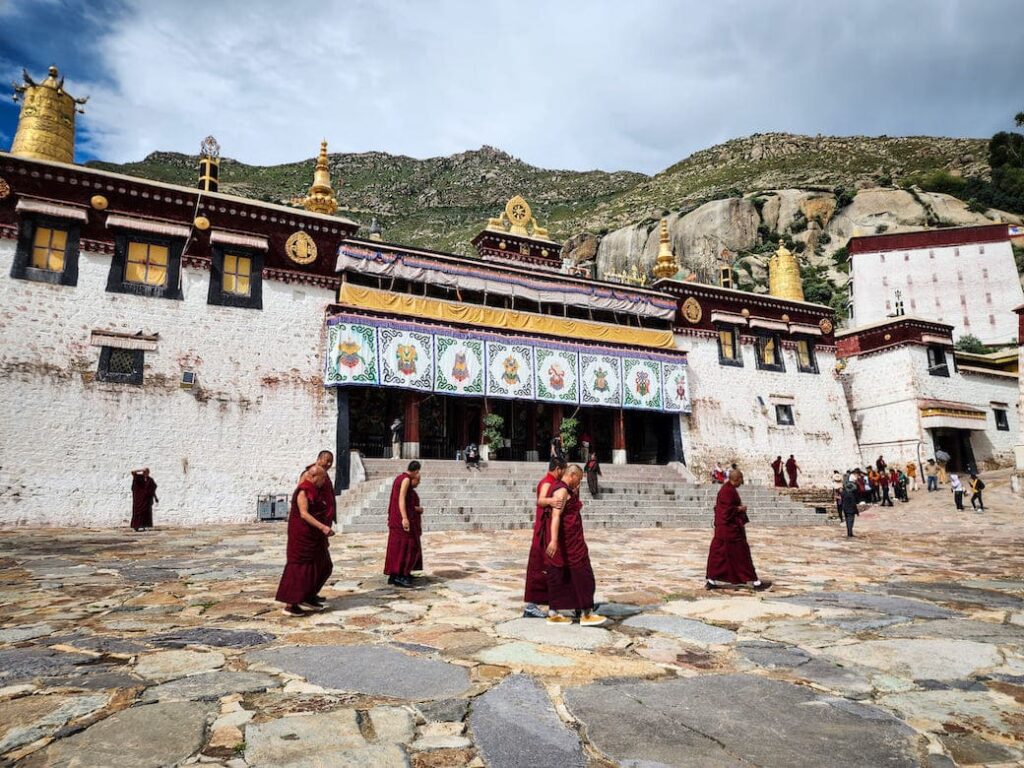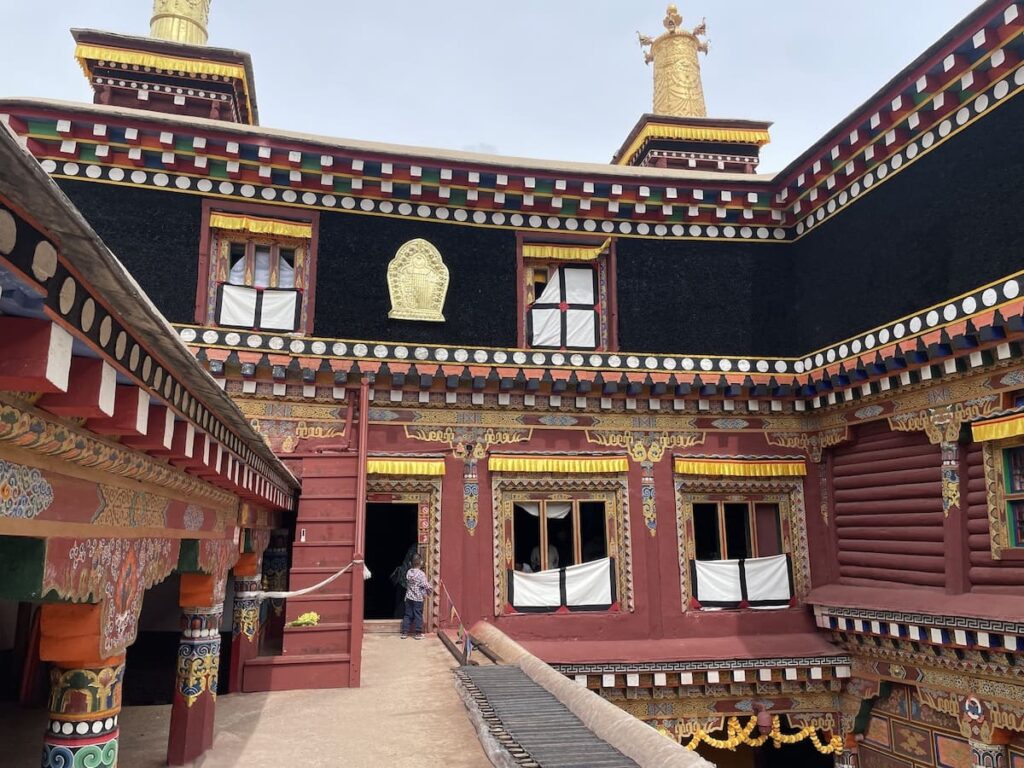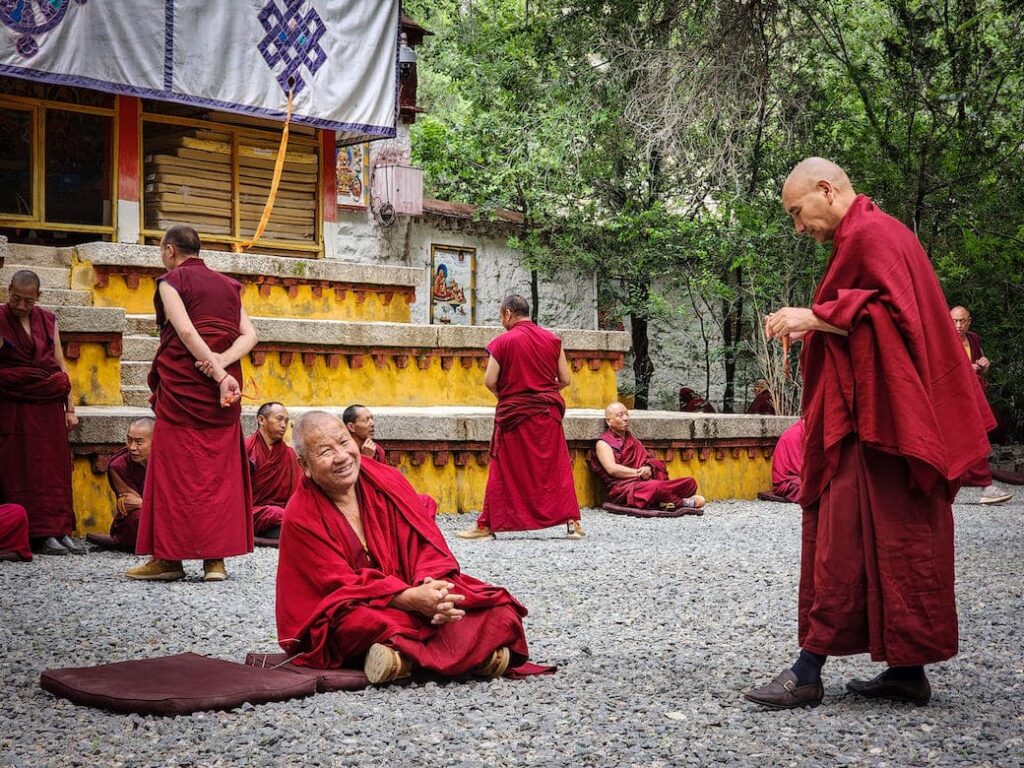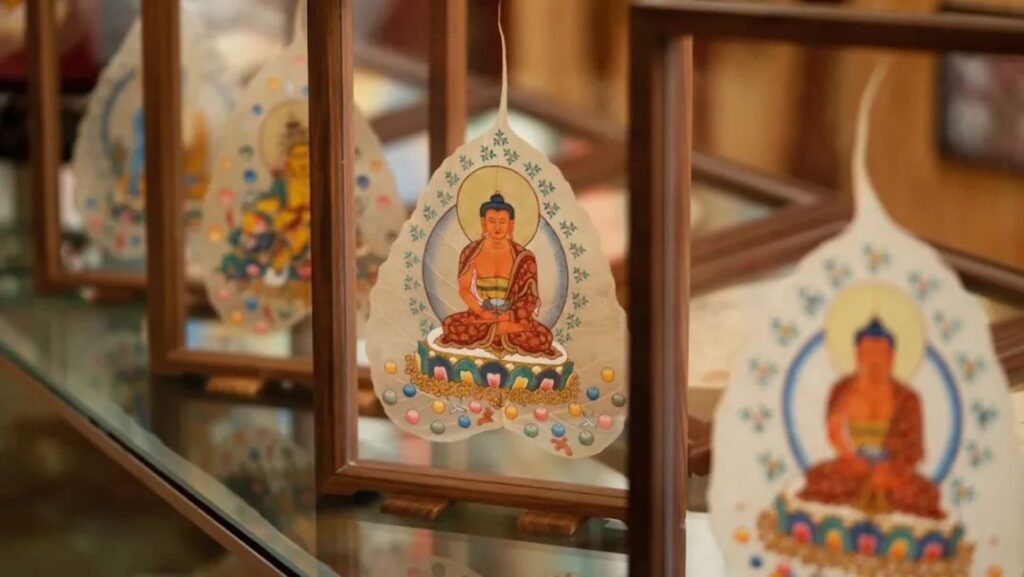Tibet, often referred to as the “Land of Snows,” is renowned for its deep-rooted Buddhist traditions. Nestled high in the Himalayas, this mystical land has been a sanctuary for Buddhist practitioners for centuries. Let’s take a glimpse into the rich tapestry of Buddhist traditions that flourish in Tibet.

Buddhism’s Arrival in Tibet
Buddhism was introduced to Tibet in the 7th century CE, during the reign of King Songtsen Gampo. The king married two Buddhist princesses, one from Nepal and the other from China, who brought Buddhist teachings and artifacts to the region. Over time, Buddhism became deeply ingrained in Tibetan culture, blending with existing Bon practices and evolving into a unique form known as Tibetan Buddhism.
Tibetan Buddhist Schools
Tibetan Buddhism encompasses various schools or lineages, each with its own distinct teachings and practices. The four major schools are Nyingma, Kagyu, Sakya, and Gelug. These schools have played a vital role in preserving and transmitting Buddhist wisdom throughout Tibetan history.
The Nyingma school is the oldest and is known for its emphasis on meditation and the Dzogchen teachings. The Kagyu school is renowned for its lineage of meditation masters and the practice of Mahamudra. The Sakya school is known for its scholarly tradition and the study of Buddhist philosophy. The Gelug school, founded by Je Tsongkhapa, is known for its monastic discipline and the Dalai Lama, who is its most prominent figure.

Monastic Life and Monasteries
Monastic life is an integral part of Tibetan Buddhist traditions. Monasteries, or gompas, serve as centers of learning, meditation, and spiritual practice. These monastic institutions house monks and nuns who dedicate their lives to the pursuit of enlightenment and the service of others.
Tibet is home to some of the most renowned monasteries in the world, such as the Jokhang Temple in Lhasa, the Potala Palace, and the Drepung Monastery. These sacred sites attract pilgrims from far and wide, seeking blessings and spiritual guidance.

Rituals and Ceremonies
Rituals and ceremonies are an essential aspect of Tibetan Buddhist traditions. These practices serve as a means to cultivate devotion, purify negative karma, and generate positive energy. Chanting of sacred mantras, prostrations, and offering of butter lamps are common rituals performed by practitioners.
One of the most visually captivating ceremonies is the Cham dance, performed during religious festivals. Monks adorned in vibrant costumes and intricate masks depict various deities and spiritual beings, conveying profound teachings through dance and music.
Compassion and Bodhisattva Ideal
Compassion lies at the heart of Tibetan Buddhist traditions. The concept of bodhisattva, an enlightened being who vows to attain Buddhahood for the benefit of all sentient beings, is deeply ingrained in Tibetan Buddhism. Practitioners aspire to cultivate compassion, wisdom, and altruism, dedicating their lives to the welfare of others.

Preservation and Revival
Tibetan Buddhist traditions have faced challenges throughout history, including political upheavals and cultural suppression. However, the resilience and devotion of Tibetan Buddhists have ensured the preservation and revival of their traditions.
In recent years, there has been a resurgence of interest in Tibetan Buddhism worldwide. Many individuals from different cultures and backgrounds are drawn to its profound teachings and practices, seeking inner peace, wisdom, and spiritual growth.
Conclusion
Tibetan Buddhist traditions offer a profound and transformative path for spiritual seekers. The practices, rituals, and teachings provide a framework for cultivating compassion, wisdom, and inner peace. As we delve into the rich tapestry of Tibetan Buddhism, we gain a deeper understanding of the human potential for enlightenment and the interconnectedness of all beings.
Remember, if you have any questions or need further assistance, I’m here to help you on your journey to spiritual growth and fulfillment. Let’s explore the wisdom of Tibetan Buddhism together!
